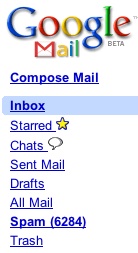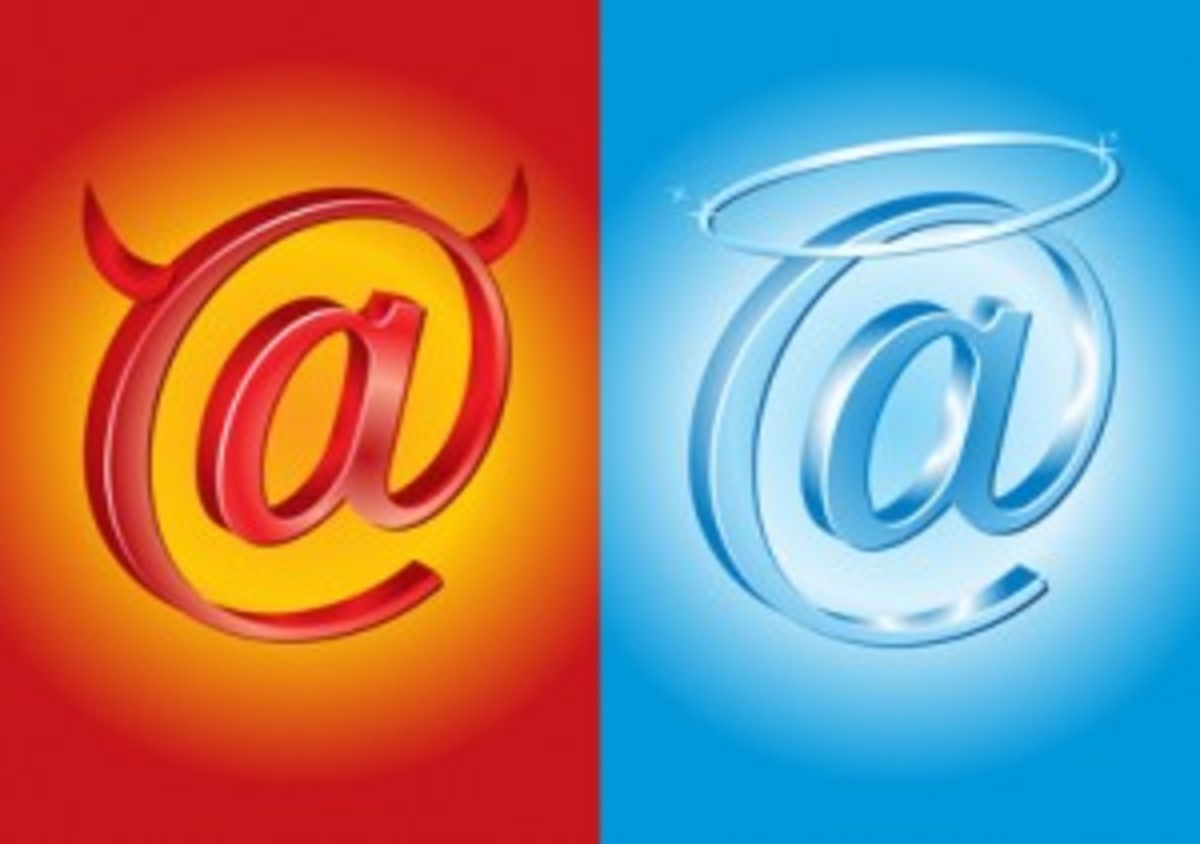Spam - How to Fight Spam Emails!
Stop Spam

Spam
The term spam come from the abbreviation of "spiced ham" and can be described as a non-requested mail sent in bulk. Even though it is better known by those who use a Internet email service, spam can also be found on mail boxes around the world.
More frequently spam is known as an e-mail with advertising purposes. However the term spam can be applied to messages sent by other means like regular mail, mobile phone messages, or even contacts and messages received through social websites.
Generally, spam has an appealing character but in most cases it is cumbersome and inconvenient.
My way to "fight" junk email
Below you will find the last posts on my DeletedSpam blog. This was the best way I found to dissuade spammers from spreading spam. How? Simply by making their emails available to be found by email spiders from other spammers and in return starting to deliver them the same thing they have been giving me - Email boxes full of junk emails!
There you will also find useful links to Free Anti Spam, Free Email Protection and Free Anti-Virus Softwares.
E-mail Spam
E-mail is the most common and known way to spamming.
There are several different methods for a spammer to get a list of addresses. One of the most common is to use programs for text interpretation (email spiders) that run scans in environments with a potentially large number of addresses available as: web pages, messages from the Usenet network and records of Domain Name Services (DNS).
This programs facilitate and automate the collection of addresses and thus sending spam messages to a large number of recipients at the same time.
Another method known as a "dictionary attack" consists on build a list of names and addresses based on very common words.
There are several kinds of junk emails beside the commercial ones. It is frequent to receive political or religious driven emails which almost never reveal the true intention of the spammer.
They often try to fool people by telling false informations that usually deal with people who urgently need some help, alert to any threat or danger, defamation of brands and companies or false offers of free products.
Then there is the chain letters where they promise luck, wealth or some other kind of benefit to those who pass a minimum number of people in a pre-determined time, ensuring that those who interrupt the flow rather than spread the message will have many misfortunes.
With this mechanism they have the ability to achieve an exponential number of people in a short period of time. Moreover they can have access to millions of new email addresses.
The Monty Python`s Spam Sketch with english subtitles

Propaganda spam disseminate products and provided services and even political propaganda. This
type of spam is one of the most common and one of the oldest already
registered.
Although there are legitimate commercial
messages sent by well known and licensed companies, it is not
unusual for the product or service offered to have some
illegal characteristic and the spammer or the company are unknown to the
public or completely anonymous.
Among others, advertising spam
often present drugs without prescription, illegal or pirated
software, university degrees, opportunities for quick enrichment,
casinos and other forms of gambling, erotic products and pornographic
pages.
Many times the spammers send image spam emails which are not spotted by some anti-spam softwares.
Scam - offering misleading opportunities and products that promise
false results. Among the most common offerings are the miracle business
opportunities or employment, work at home proposals and facilitated loans. All can be found in a list drawn up by the Federal Trade
Commission in 1998 bringing together 12 common types of fraud and scams
related to spam in the United States at the time.
One of
the more popular scams on the Internet is the message in which the sender
claims to be a Nigerian contacting because of personal or political reasons saying that is
willing to transfer a large amount of money provided that the recipient
pays a fee as a guarantee. This spam is known as "419" because the
number of the Nigerian criminal code which applies in those cases.

This classification may also include messages that invite readers to participate in a "pyramid" scheme and promise to quickly multiply the profits of investors. This scheme which is to pay a sum to the person from whom it received the invitation to have the right to invite other people and have each of them to pay the same amount paid.
Phishing Spam - When messages take the guise of commercial spam
or try to simulate common messages as reported transmitted
within an organization or personal messages from people you know.
This disguise aims to deceive the recipient and ask it to send
confidential data (filling out a form for example) to some email
address or to register on a Web page that is really a copy of any
other page. In most cases these traps are designed to obtain personal
information and passwords to be used in any type of fraud or bank
transfers and purchases over the Internet.
Malicious Softwares - Similar to phishing spam this type of disguise induces the recipient to run a malicious computer program sent from the message (causing the error). Among the programs usually sent in this way are the viruses, the worms and trojans.
Anti-spammers Features
The main technical procedure against spam is the use of blocking programs also known as filters.
These programs are based on the idea of analyzing the text of the message to obtain the probability of it being a spam or not. Once identified the spam message can be deleted or automatically moved to another folder.
Generally the search
patterns can be defined by the user which makes the filters a
potentially powerful tool.
Bayesian filters are filters that use statistical techniques to
identify and monitor the receipt of spam. Currently
they are the most efficient filters and most users and providers report efficiency that can reach 99.99%.
Another technical method to reduce spam is to hide e-mail
addresses through procedures of camouflage. Some text
interpretive programs running scans on the World Wide Web in search of addresses can be
deceived by rudimentary encryption such as replacing "@" by "at" leaving
the address legible to a person.
Using temporary email addresses can also help avoiding spam emails. Every time your email address is required by some registration process you can use a disposable e-mail address which expire after 60 Minutes
A useful free tool that may be used in the reporting of spam is also available (Complainterator). The Complainterator will send an automatically generated complaint to the registrar of the spamming domain and the registrar of its name servers.
Historically reporting spam in this way has not seriously decreased spam since spammers simply move their operation to another URL, ISP or network of IP addresses.
Consumers may also forward "unwanted or deceptive spam" to an email address maintained by the FTC (spam@uce.gov). The database collected is used to prosecute perpetrators of scam or deceptive advertising.
An alternative to contacting ISPs is to contact the registrar of a domain name that has used in spam e-mail.
Registrars, as ICANN-accredited administrative organizations, are obliged to uphold certain rules and regulations, and have the resources necessary for dealing with abuse complaints.








